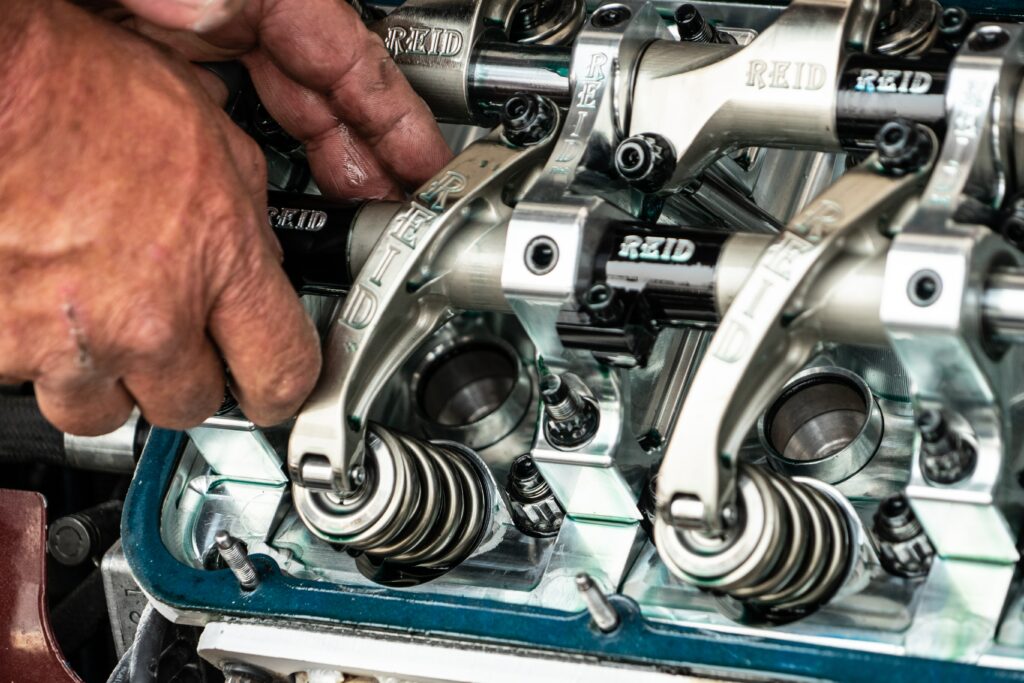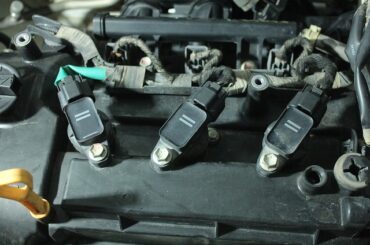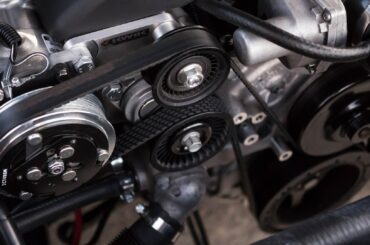In automotive lore, few practices have garnered as much attention and curiosity as the “Italian tune-up.” Revered by car enthusiasts and mechanics alike, this driving technique has become a staple topic of discussion among those seeking to unlock the hidden potential within their vehicles. At its heart, the Italian tune-up is perceived as a remedy for a common ailment in internal combustion engines: carbon deposits. The technique involves spirited driving sessions, often at high speeds and elevated RPMs, to dispel accumulated carbon from the engine and exhaust system.
Question: Italian tune-up: Does it really work?
Contents
The Theory Behind the Italian Tune-Up
At the heart of the Italian tune-up lies a straightforward principle: strategically deploying high speeds and elevated RPMs to combat carbon deposits that can accumulate within an engine and its exhaust system. The rationale driving this technique is grounded in the historical evolution of automotive engineering. In an era when engine technologies were less sophisticated and fuel quality was more variable, carbon deposits posed a substantial challenge to engine efficiency and performance.

As engines burned fuel less cleanly and fuel additives were less effective, carbon deposits could accumulate on vital components, hindering their functionality and compromising overall engine health. The Italian tune-up emerged as a bold solution in response to this issue. By subjecting the engine to sustained high-speed driving, proponents believed that the intense heat and increased exhaust flow would dislodge and burn off these carbon accumulations, essentially “clearing the pipes.”
Beyond its historical context, the Italian tune-up is also predicated on achieving immediate benefits. As carbon deposits hinder the proper flow of air and fuel, the belief is that their removal can lead to tangible improvements. These benefits encompass heightened throttle response, optimized fuel efficiency, and smoother engine operation, thus translating into an enhanced driving experience.
Read More: Click Here
Carbon Buildup: Past vs. Present
The evolution of automotive engineering has ushered in a notable shift in the significance of carbon buildup within engines, differentiating past challenges from the realities of present-day vehicles. Carbon deposits held far greater sway over engine performance and longevity in the bygone era of vehicular technology. Engines of yesteryears, characterized by simpler designs and less refined combustion processes, were susceptible to substantial carbon accumulation.
Modern engines stand as pinnacles of technological advancement, featuring intricate fuel injection systems and intelligent engine management that work in concert to optimize combustion efficiency. This paradigm shift has yielded a pronounced reduction in carbon accumulation. Unlike their predecessors, modern engines minimize the formation of carbon deposits, ensuring smoother airflow, cleaner combustion, and sustained performance.
Potential Benefits and Drawbacks
With its promise of reviving engine vitality, the Italian tune-up carries with it a balance of potential benefits and corresponding drawbacks that demand careful consideration.
Advantages:
Enthusiasts and proponents of the Italian tune-up tout its potential advantages as alluring reasons to engage in the practice. Among these benefits, improved responsiveness and enhanced fuel efficiency stand out. The swift expulsion of carbon deposits through high-speed, high-RPM driving, is believed to rejuvenate throttle response, allowing for a more immediate and lively reaction to driver inputs. Similarly, the combustion efficiency improvements resulting from carbon deposit removal can enhance fuel economy, stretching each gallon of fuel further.
Drawbacks:
While the Italian tune-up offers alluring perks, it is not without its downsides. One notable drawback lies in the increased stress the technique places on various vehicle components. Pushing an engine to operate at high speeds and RPMs for extended periods introduces heightened wear and tear. This accelerated degradation can lead to increased maintenance needs, potentially offsetting the short-term responsiveness and fuel efficiency gains.
Moreover, subjecting a vehicle to extreme driving conditions can also decrease fuel economy. While the technique aims to enhance efficiency by removing carbon deposits, the wear and tear incurred during the process can have a counterproductive effect on overall fuel consumption.
Safety concerns are yet another facet to consider. The Italian tune-up demands driving aggression that may not align with normal driving habits. This divergence can lead to risks on the road, jeopardizing the safety of the driver and other motorists.
Balancing Act:
As with many automotive practices, the Italian tune-up presents a trade-off. Short-term benefits of improved responsiveness and fuel efficiency must be weighed against the potential long-term risks of increased wear, decreased fuel economy, and compromised safety. Striking this balance requires a discerning assessment of one’s vehicle, driving conditions, and the efficacy of alternative maintenance approaches. Ultimately, the allure of immediate gains must be counterbalanced by a comprehensive understanding of the lasting impact on the vehicle’s health and performance.
Effectiveness in Modern Vehicles
The effectiveness of the Italian tune-up in modern vehicles rests upon the transformative integration of advanced engine management systems that have reshaped the dynamics of combustion and carbon deposit management.
Intricate Engine Management Systems:
Modern vehicles have sophisticated engine management systems beyond conventional mechanical components. These systems employ intricate algorithms to precisely control fuel injection timing, air-to-fuel ratios, and ignition timing. The result is an optimized combustion process that minimizes the formation of carbon deposits. As such, the need for manual intervention through aggressive driving techniques is diminished.
Adaptive Optimization:
One hallmark feature of modern engine management systems is their adaptability. These systems constantly monitor driving conditions, engine parameters, and performance metrics. This adaptability allows the engine to make real-time adjustments to combustion processes, ensuring efficient operation across a range of driving scenarios. Modern engines automatically tailor their behavior to minimize carbon accumulation, negating the necessity for extreme driving maneuvers.
Expert Opinions and Research:
Experts in the automotive industry and research studies have lent their insights to the debate surrounding the relevance of the Italian tune-up in the context of contemporary vehicles. Many reputable sources suggest that the practice’s significance has waned due to the technological leaps achieved by modern engine management systems. Research studies have demonstrated that the efficiency gains attributed to the Italian tune-up can often be outstripped by the cumulative wear and potential damage inflicted on vehicle components.
Experts emphasize that adhering to regular maintenance schedules, utilizing recommended fuels and additives, and employing occasional fuel system cleaners are more effective strategies for maintaining engine cleanliness and efficiency without the adverse consequences of aggressive driving.

Modern cars increasingly rely on sophisticated technologies to optimize engine performance, so the Italian tune-up’s efficacy is scrutinized. Advancements in engine management systems have rendered the practice less essential, emphasizing the importance of informed decision-making when choosing maintenance strategies for modern vehicles.
The Role of Regular Maintenance
In maintaining optimal engine performance and longevity, the Italian tune-up is overshadowed by the unwavering importance of consistent, well-informed regular maintenance practices.
Adhering to a Maintenance Schedule:
A cornerstone of vehicle ownership, adhering to a regular maintenance schedule is paramount. Regular maintenance extends the engine’s life and ensures that it operates at its peak efficiency. Ignoring scheduled maintenance can compromise engine health, leading to decreased performance, reduced fuel economy, and potentially costly repairs.
Recommended Maintenance Practices:
Manufacturer-recommended practices hold the key to preserving engine health. Routine oil changes using manufacturer-approved oils are a linchpin of maintenance. High-quality fuels are equally vital for cleaner combustion and diminished carbon accumulation. Incorporating periodic fuel system cleaning, as recommended by experts, can further combat carbon buildup without resorting to aggressive driving techniques.
Reliability and Sustainability:
Regular maintenance stands in stark contrast to the Italian tune-up’s aggressive approach. While the Italian tune-up might yield short-lived benefits, the long-term consequences—increased wear, decreased fuel economy, and potential safety hazards—pose risks that outweigh its fleeting advantages.
In contrast, maintaining a maintenance regimen ensures consistent and sustainable engine performance. Vehicle owners can maintain their engine’s efficiency and responsiveness by following manufacturer guidelines and incorporating high-quality products without resorting to extreme practices.
Expert Insights and Recommendations
Gathering insights from seasoned automotive experts, mechanics, and engineers sheds light on the Italian tune-up’s place in contemporary vehicle care and unveils alternative strategies for ensuring optimal engine health.
Words from the Experts:
The Italian tune-up, while rooted in tradition, has been largely overtaken by advancements in engine management systems. Aggressive driving might offer temporary benefits, but the potential downsides to engine longevity and fuel efficiency cannot be overlooked.”
Prudent Alternatives:
Professionals recommend alternative measures for preventing carbon buildup and nurturing engine health. Regular use of fuel additives designed to clean injectors and combustion chambers can be effective. Additionally, adhering to recommended maintenance intervals, including routine oil changes, and using high-quality fuels can go a long way in maintaining engine cleanliness and performance.
Italian tune-up: Does it really work?
In the world of automotive care, the Italian tune-up has intrigued both enthusiasts and practical drivers. We’ve explored its origins, theory, and relevance in today’s automotive landscape, uncovering its benefits and limitations.
Past vs. Present:
The Italian tune-up emerged as a solution to carbon buildup in older engines. But modern technology has transformed engine efficiency, rendering the practice less vital.

Question Answered:
Does the Italian tune-up truly work? Its effectiveness has shifted due to advanced engine management systems.
Informed Choices Matter:
Maintaining an efficient engine involves understanding modern tech, expert advice, and regular maintenance. While the Italian tune-up’s appeal persists, informed decisions aligned with current advancements are more reliable and sustainable.
Unleashing the Power of V14 Engines in 2023
How to Prevent a Blown Rod in Engine 2023





